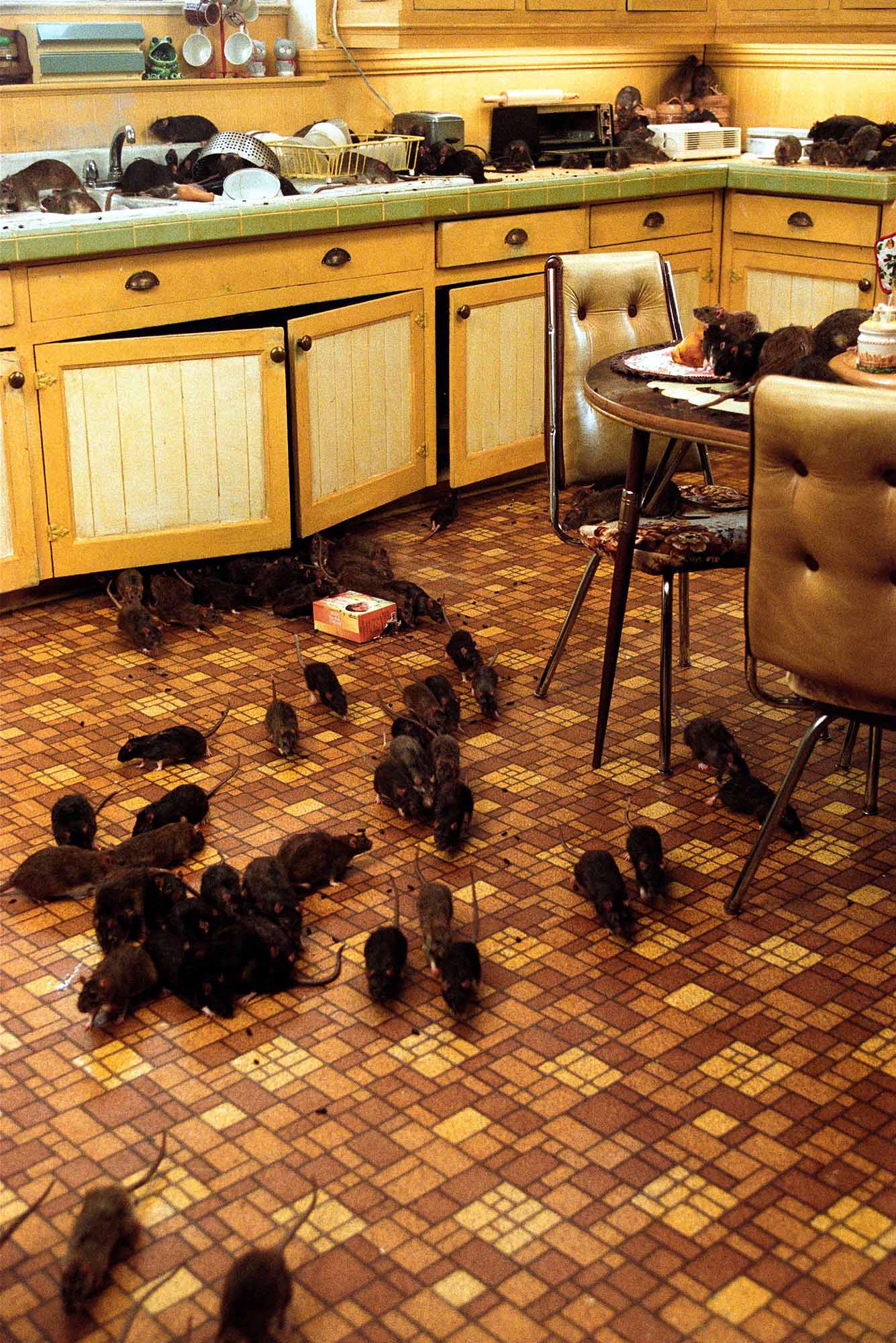老鼠! 波士顿需要“老鼠沙皇”吗?
Yes, say a BU researcher and some students in Allston’s “rat city,” as Boston ponders new post

The rat population in Boston has surged in the last decade, prompting a proposal to consolidate municipal pest control under a rat czar. Photo by svetograph/iStock
老鼠! 波士顿需要“老鼠沙皇”吗?
Yes, say a BU researcher and some students in Allston’s “rat city,” as Boston ponders new post
Justin Davids is up to his proverbial armpits in rats in Allston, dubbed “rat city” by many of its student residents. He scooters past rodent corpses on his way to class from his apartment on Pratt Street. Live ones scamper outside: “Some days, I say, oh my God, that’s a really big one, and some days, I’m like, okay, that’s a harmless one.” One even skittered across his living room.
“It shot up our fireplace,” Davids (CAS’26) says.

Terriers were bred to kill rats. Terriers of the BU variety leave extermination to professionals, but at the risk of rat-shaming, even the pros can’t keep up in Boston, which could host another Willard remake amid a plague of long-tailed residents. Although hailing from vermin-sparse suburban Maryland, the fatalistic Davids hasn’t notified authorities or his landlord about the pests. “Obviously, it sucks,” he says, “and I hate it, because I hate rats. But I’ve gotten used to it over time.”
Not that used to it, though: he’s weighing a move to less ratty environs.
That could require heavy-duty house-hunting. A New York–based pest firm rated Beantown fourth in the nation last year for rat-and-cockroach sightings. (Coming from New York, the elevated ranking says something: the Big Apple so loathes the critters that a job posting for its first-ever “rat czar” required applicants to be “bloodthirsty” and devoted to “wholesale slaughter.”) Rat complaints have soared in Boston from 2,173 a decade ago to 3,949 last year, streaming in from Beacon Hill to Mission Hill and the North End. That last neighborhood recently witnessed a rat-bites-dog story, when an estimated one-pounder gnawed a Shiba Inu that had picked it up.
Boston City Councilor Ed Flynn wants the city to hire its own czar to oversee a new Office of Pest Control, consolidating efforts dispersed among several departments. A hearing on his proposal is scheduled for today at 2 pm in City Hall’s fifth-floor Iannella Chamber.
The city’s building boom partly explains the numerous sightings. “Construction definitely disrupts rodent habitat,” says Jessica Leibler, an associate professor of environmental health at the School of Public Health, who has coauthored papers for Tufts University’s Boston Urban Rat Study. When her work turf, BU’s Medical Campus, had a spate of construction some years back, Leibler recalls, “Anecdotally, talking with faculty, staff, and students, a lot of people were seeing rats on campus. These are not animals that are walking miles and miles for food. When you see rats, you’re seeing them pretty close to where their burrows are.”
Construction projects end. The engine of Allston’s epidemic, by contrast, doesn’t run out of gas. “The main issue is residents and tenants leaving trash wherever they please,” says Gwen Stewart (CAS’25), who lives on Chester Street.
“Students tend to rent in [less expensive] areas and do not treat the neighborhoods with the care and respect that they deserve,” Stewart adds. “You’ll see lots of trash carelessly tossed in the streets Saturday nights, and honestly I do not blame the rats for setting up shop.” Like Davids, she hasn’t bothered speaking to her landlord or the city for help “because, from my understanding, there is not much they can do.”
Students tend to rent in [less expensive] areas and do not treat the neighborhoods with the care and respect that they deserve.
Leibler says Flynn’s proposal would address a very real health threat. “Across human history, rats have been responsible for major epidemics of infectious disease,” she notes. “There is research indicating that wild rodents carry all kinds of things, from bacteria with genes that code for antibiotic resistance to novel and emerging viruses.” The Tufts rat study has found such pathogens as influenza in wild rodents.
“Rodents in the living environment are much more likely to trigger respiratory events in kids,” particularly asthma, Leibler adds. “There’s also [the case] that, when we see rodents in their living environment, we may feel bad about where we live. There are a number of studies that look at the negative mental health consequences of seeing rodents regularly in your living environment.”

Her own research has found another vulnerable population: people experiencing homelessness. In a questionnaire for one paper, “30 percent of our nearly 200 participants reported seeing rodents on a regular, and even daily, basis. These were folks living in shelters or public housing, and some people who were unsheltered.”
Still, Leibler cautions against New York–style wholesale slaughter. “You could bring the angel of death to rat populations across the city, but most likely, another nuisance animal would arise in the ecological niche,” she says. Promiscuous use of rodenticide also puts children, pets, and soil and water at risk of exposure, she adds. (A beloved New York owl, who attracted a social media following after escaping Central Park Zoo, recently died after colliding into a building—he was found to have ingested toxins, including rat poison.)
“I think addressing the ecological factors that pull rats into our living environment in undesirable ways is the best approach,” says Leibler. She points to integrated pest management—targeted approaches, such as chemicals that disrupt rats mating, trapping, and weeding, before resorting to rodenticides—as having worked in smaller cities.
You could bring the angel of death to rat populations across the city, but most likely, another nuisance animal would arise in the ecological niche.
That approach is used by BU on campus, says Bill Walter, associate vice president for Facilities Management & Operations. The University also employs “a new technology to eliminate exterior borrows, by injecting carbon dioxide,” he says, which nixes the need for poisons near places where humans might be exposed.
There’s an additional reason to hit the slaughter-button pause, Leibler says. Rats get a bum rap.
Rare among animals, they have “adapted to almost every environmental challenge that people have thrown at them” throughout history. Leibler isn’t suggesting that you “sit down with a rat and a cup of coffee,” but with climate change warming temperatures and intensifying extreme weather, she believes we could do worse than study our rodent neighbors’ adaptation strategies.
As for students living with rats?
Stewart is “interested in the idea of a rat czar, but I’m afraid I would need to know more about the idea.”
Davids, however, is all in. “Any way you can get them out of here, that would be great.”

Comments & Discussion
Boston University moderates comments to facilitate an informed, substantive, civil conversation. Abusive, profane, self-promotional, misleading, incoherent or off-topic comments will be rejected. Moderators are staffed during regular business hours (EST) and can only accept comments written in English. Statistics or facts must include a citation or a link to the citation.